Summer Triangle Satellites, Albireo, Campbell's Hydrogen Star,
Barnard Galaxy, Barnard Objects
Posted: 4 September 2024
|
Open: Tuesday, 3 September 2024, 1811 MST Temperature: 83°F |
Session: 2003 Conditions: Clear |
Equipment:
12" f/8 LX600 w/StarLock
2" 24mm UWA eyepiece
Focal reducer
Camera:
iPhone 15 Pro Max
D850 DSLR
1816 MST: LX600 ON, StarLock OFF, High Precision OFF.
Viewed the planet Venus, 102X.
1825 MST: Relaxed on the observatory patio bench.
1852 MST: Dome OFF.
Prepared the D850 DSLR for imaging.
1856-1953 MST: Relaxed on the bench to watch the stars come out.
1948 MST: Saw a bright tumbling satellite moving along the Milky Way. Took this handheld iPhone 15 Pro Max photo using the Camera app (Night Mode, 10 seconds, 1X lens). It shows the Summer Triangle (stars Vega, Deneb, and Altair), the Milky Way in the constellation of Cygnus, and four satellites (in 10 seconds!) in our crowded sky.
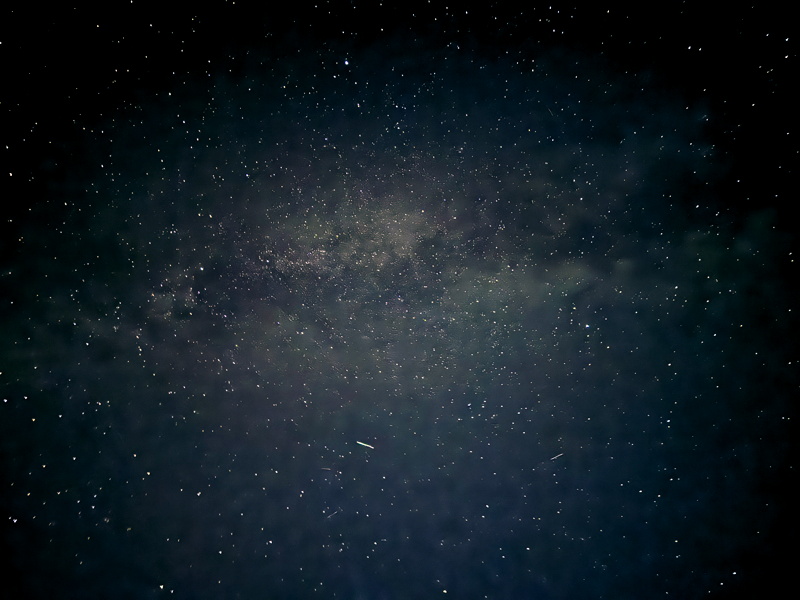
Mouseover or tap on image for labels
Viewed the colorful double star Albireo, 102X.
Mounted the D850 DSLR at prime focus, focused on Albireo, and locked the 12" primary mirror.
1959 MST: High Precision ON, StarLock ON.
Took this StarLock autoguided image of Albireo (10 seconds, ISO 800).
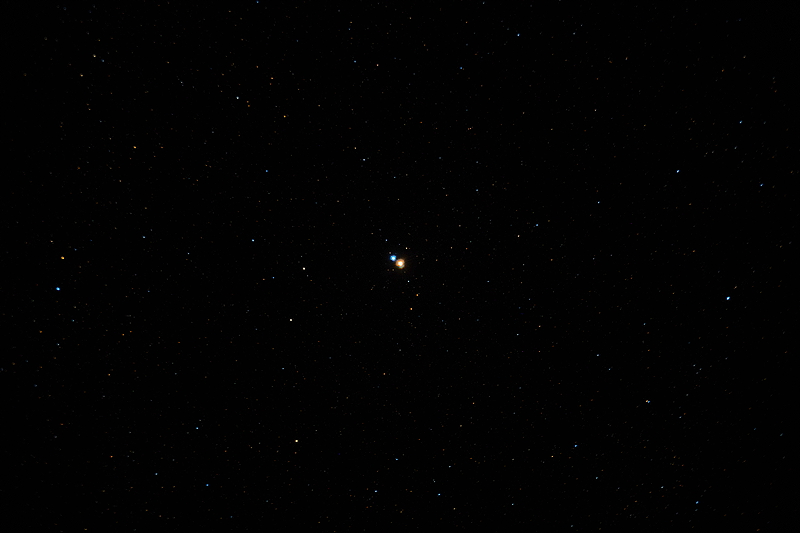
I had been requested to photograph Campbell's Hydrogen Star. This StarLock autoguided image (60 seconds, ISO 3200) shows the red star at the center.
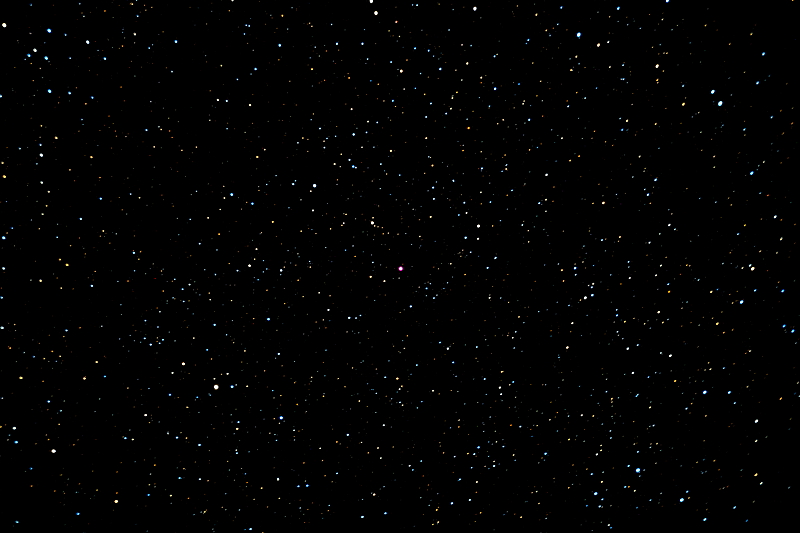
I then took this StarLock autoguided image of Barnard's Galaxy NGC6822 (5 minutes, ISO 5000) I had last imaged it in June 2011.
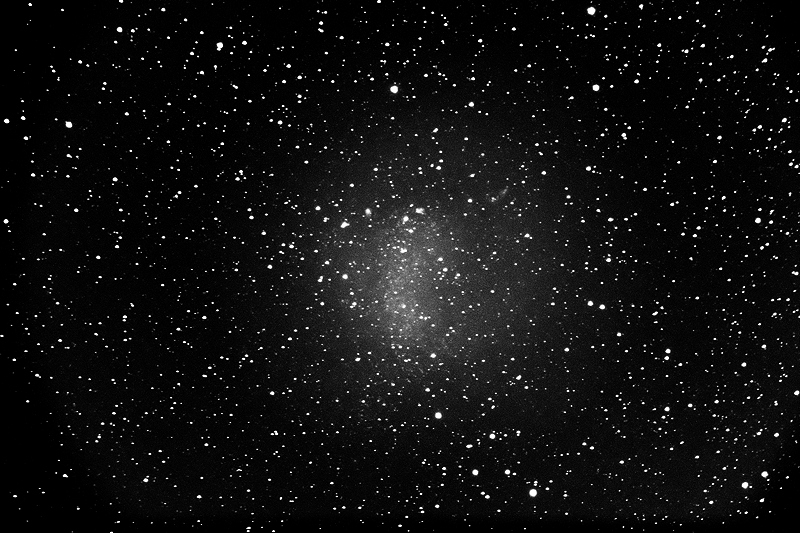
Then mounted the D850 DSLR at prime focus + focal reducer. Focused on on Altair and locked the mirror. Took these StarLock autoguided images of some Barnard Object dark nebulae (2 minutes, ISO 3200).
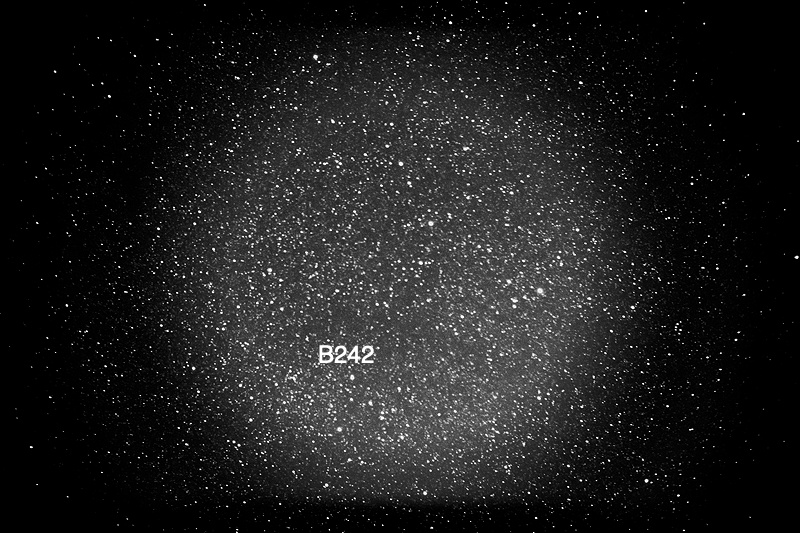
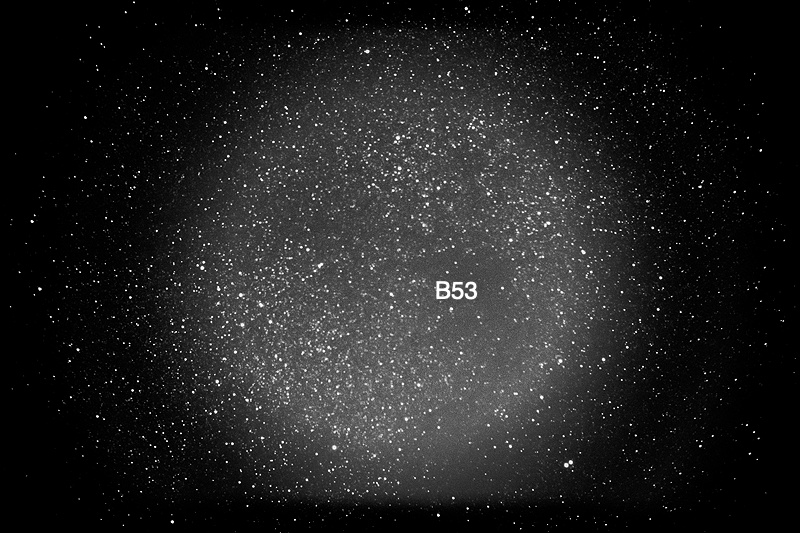
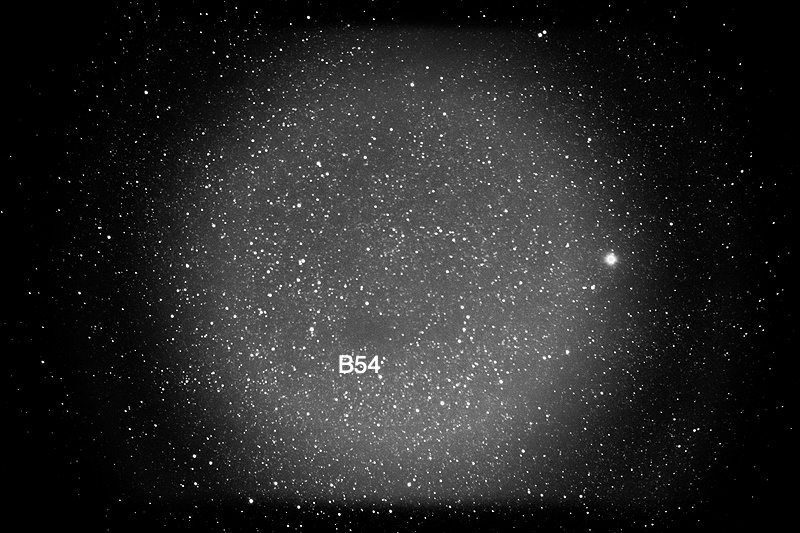
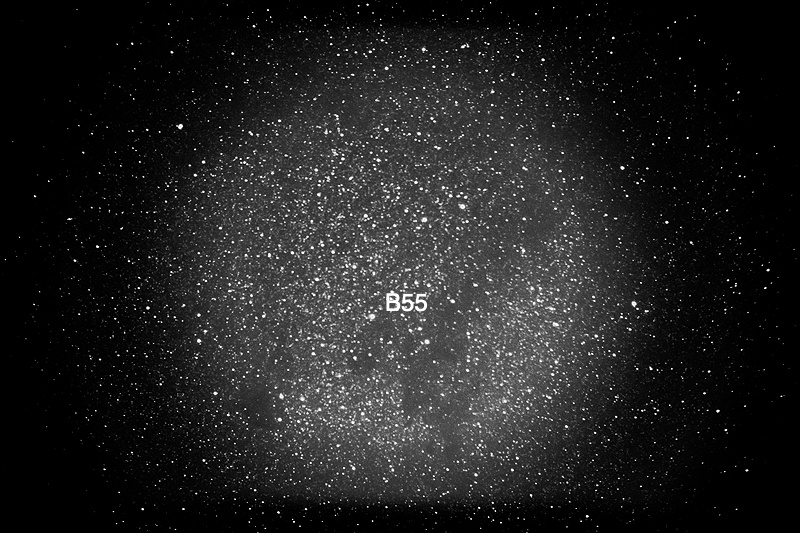
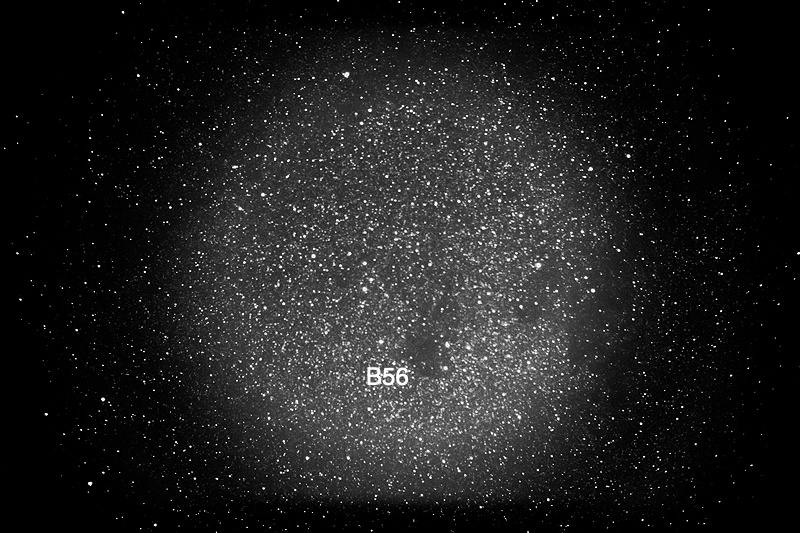
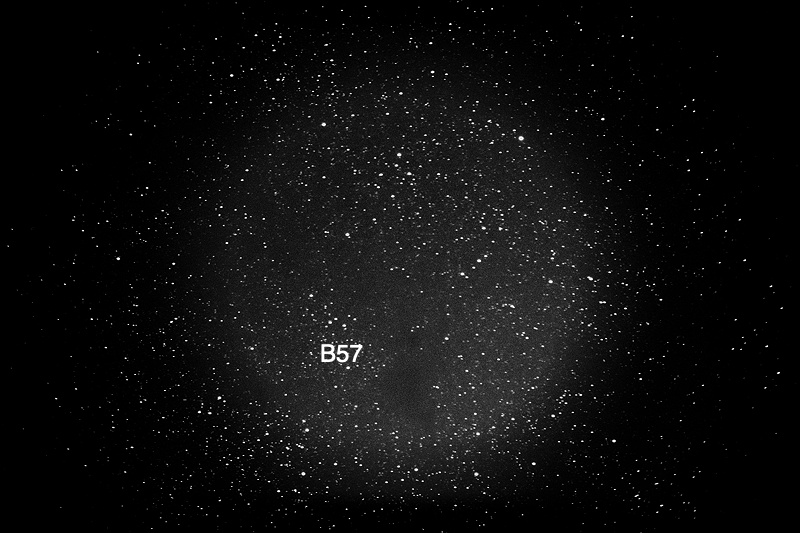
2114 MST: StarLock OFF.
Observed (or rather, I tried to observe as they were all very low in the southern sky) the following Barnard Objects, 102X: B178, B243, B244, B58, B59, B60, B245, B246, B247, and B248.
I then viewed Campbell's Hydrogen Star, 102X. It appears a lot different to the eye than it appears photographically.
2145 MST: High Precision OFF.
Viewed the planet Saturn, 102X.
2153 MST: LX600 OFF.
2157 MST: Dome ON.
2206 MST: Took a Sky Quality reading and reported the result to Globe at Night. The sky was unusually bright due to particulates in the atmosphere from all the recent wind.
|
Close: Tuesday, 3 September 2024, 2210 MST Temperature: 73°F |
Session Length: 3h 59m Conditions: Clear, SQM 20.67 |
Comments are welcome using Email. Please read the Email Etiquette guidance.
Cassiopeia Observatory Home Page
Copyright ©2024 Michael L. Weasner / mweasner@mac.com.
URL = http://www.weasner.com/co/Reports/2024/09/04/index.html
